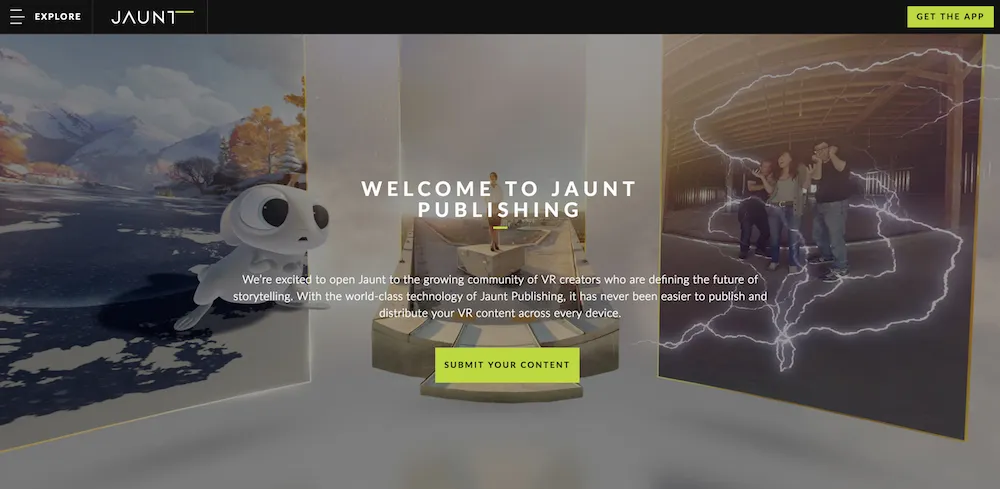Well-funded 360-degree video startup Jaunt VR recently debuted a publishing platform to rival YouTube as it continues to dabble in all aspects of reality capture. As part of the platform, Jaunt seems to be aggregating the head tracking data of viewers across its apps on a variety of platforms. The information is being delivered to creators as overlays showing a map of where people looked while watching a 360-degree movie. These “heatmaps” give an indication to creators whether their project is being viewed as intended or whether some viewers are finding their attention drawn to places the video’s creator didn’t expect. Red indicates a lot of attention, blue just a bit and black none at all. Check out a sample embedded below.
We’ve heard of others working on similar technology, but Jaunt was a relatively early player in VR that’s raised more than $100 million to date from companies including Disney. If these heatmaps help creators make better videos, it could give Jaunt an edge as it competes with the likes of Facebook and Google to expand its content library. Facebook, in fact, just announced similar tools.
For example, Quba Michalski created the 360-degree film The Pull and it’s featured as one of the first works offered through the newly launched Jaunt platform. Michalski wrote a post outlining how the heatmaps identify exactly what works and what doesn’t:
“Each new production is another experiment. While we are slowly developing lists of best practices and things to avoid – they are often built on anecdotal evidence, susceptible to creators’ biases and preconceived notions. With heatmaps, any creator gains access to actual, empirical evidence and statistical data on how thousands of viewers experience the content.”
“…Until now I was only able to observe how people react and interact with my work through a very small sample – private screenings, festivals, friends. Today, I am able to finally validate my assumptions and see what worked and what did not.”
Jaunt says the heatmaps “will help content creators tell better stories by learning how best to lead their audiences to the narrative.” As a creator, the data is much appreciated by Michalski, who wants it to be a standard feature on all 360-degree video hosting platforms along with the ability “to be able to filter the data by device and demographics.”
For users, I wondered whether Jaunt’s privacy policy disclosed this usage in a clear way. VR headsets come standard with microphones and head tracking and these two technologies can be used to paint a pretty detailed picture of who your are, so I think it’s important to make sure VR companies are operating in a clear way with their users about privacy concerns. The Jaunt privacy policy was last updated in Nov. 2014, right around the time Samsung shipped the first Gear VR powered by Facebook-owned Oculus. The below sentences cover information collected by Jaunt and how they will share that information with others:
We collect certain information that your device sends when you use our services, like a device identifier, user settings, as well as information about your use of our services.
We may share information about you in anonymous and/or aggregated form with third parties for usage analytics (to help us better understand who is using our services and how) and for industry analysis, demographic profiling, research, and other similar purposes.”
In comparison, the Oculus privacy policy includes this sentence among the information they collect about you: “Information about your physical movements and dimensions when you use a virtual reality headset.” Oculus was recently questioned by Senator Al Franken regarding privacy concerns, responding with a 7-page letter (PDF) outlining examples of how and why they collect information and would share information with others.
Though the Oculus privacy policy also warns users that third parties (like Jaunt) may also collect information about you, I asked Jaunt whether the company should amend its privacy policy to more clearly indicate how and why it uses head tracking information. Jaunt spokesperson Miles Perkins wrote in an email it would be “difficult to specifically define how any one feature is going to be used” because new innovations in VR are being introduced all the time — like interactive videos that branch the story based on where you look.
“Our approach to data is to find ways that it will help creators and the industry as a whole – ways that will make content better,” Perkins wrote in an email.





























